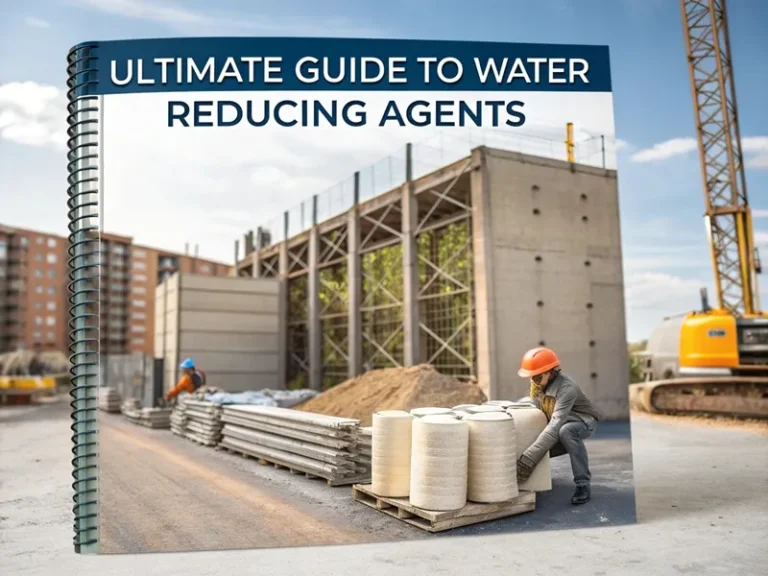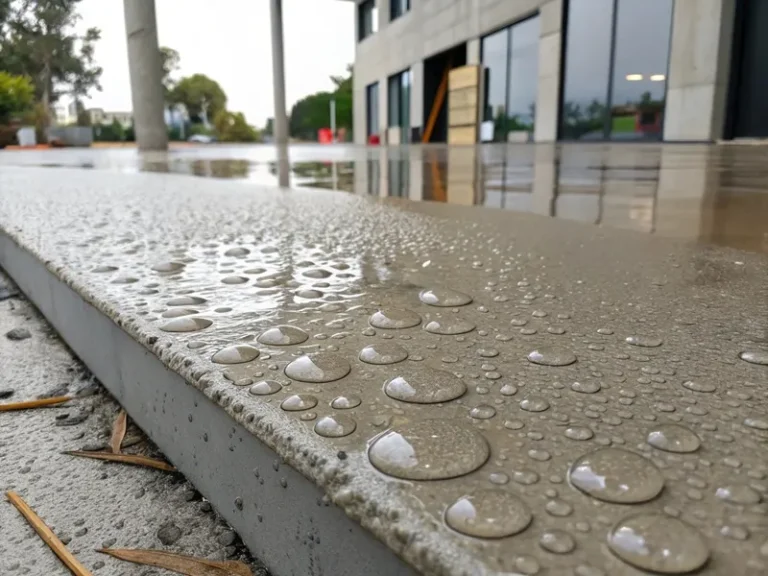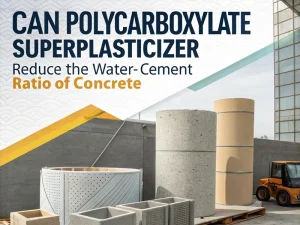Blog

The water-reducing agent is an essential additive in concrete. It aims to reduce the water required in concrete mixtures while maintaining the desired concentration of aggregates. Most water-reducing agents are anionic surfactants.
Water-reducing agents can be classified into different types based on their ability to reduce water and enhance strength.
Also known as plasticizers, these reagents have a minimum water reduction rate of 8%. Lignosulfonate products are typical representatives. They effectively improve the workability of concrete to a certain extent. However, their water reduction and strength enhancement effects are relatively mild compared to more advanced types. They are typically used in concrete applications where performance improvement requirements are low.
Also known as superplasticizer, with a water reduction rate of not less than 14%, including naphthalene series, melamine series, amino sulfonate series, aliphatic series, and polycarboxylate superplasticizer (with a water reduction rate of not less than 25%).
High-efficiency water-reducing agents can significantly improve the fluidity of concrete, thereby producing high-strength concrete. They are widely used in projects that require high-performance concrete, such as high-rise buildings, large-span bridges, and industrial structures.
According to the influence of water-reducing agents on the setting time and early strength development of concrete, it can be divided into the following three types.
Early strength types benefit projects requiring rapid enhancement, such as construction in cold weather or with tight schedules.
The standard type is suitable for general applications that require normal solidification time and strength development.
Retarding types are used when concrete needs to maintain its workability for a long time, such as during large-scale concrete pouring or construction delays.
If the dosage of the water-reducing agent is too high or too low due to human error or is not by the standard, it will cause a quality problem. Excessive addition of water-reducing agents to concrete can result in excessive collapse, stone segregation, bleeding, and other phenomena.
Concrete with excessive collapse becomes too fluid and difficult to handle during construction. This extreme fluidity can lead to separating aggregates, especially larger stones, from the mortar matrix. When the stone begins to move independently in an excessively flowing mixture, the uniform structure of the concrete will be disrupted. This will not only affect the appearance of the final concrete product but also significantly weaken its structural integrity.
For example, in a large construction project, if concrete columns or beams are made of aggregate and aggregate segregation occurs due to excessive water-reducing agents, the load-bearing capacity of these structural components may be severely compromised, leading to potential safety hazards.

Excessive water-reducing agents can also cause concrete to bleed. Bleeding refers to the appearance of water on the surface of newly poured concrete when heavy solid particles settle. This phenomenon clearly indicates that the internal structure of concrete has been disturbed. Excessive water-reducing agents disrupt the balance between water, cement, and aggregates. The seeping water can carry away small cement particles, leaving behind a porous and fragile surface. This porous layer is more susceptible to environmental factors such as freeze-thaw cycles, chemical erosion, and wear.
In outdoor structures such as bridges or pavements, the long-term durability of concrete is seriously threatened. It may require expensive repairs in a relatively short period.

For polycarboxylate superplasticizers, special attention should be paid to storage and handling. Polycarboxylate superplasticizer is acidic. When they come into long-term contact with iron-containing materials, slow chemical reactions may occur. This reaction can gradually change the performance of polycarboxylate superplasticizers.
For example, the reagent’s molecular structure may change, leading to a decrease in its water reduction efficiency or a change in its dispersibility. Suppose metal containers are used to store polycarboxylate superplasticizers. In that case, they should be stored for no more than six months, as recommended.
During this period, regular inspections should be conducted to ensure that the performance of the water-reducing agent remains stable. Suppose any signs of discolouration, precipitation, or viscosity changes are observed. In that case, the quality of the reagent may be affected and should be tested before use.
It is necessary to strictly calculate the water-reducing agent and mixing water and follow the laboratory-determined water consumption. Do not increase or decrease it arbitrarily to avoid adverse phenomena that may affect concrete’s normal construction and pouring quality.
As mentioned earlier, excessive use of water-reducing agents beyond the recommended level can lead to problems such as excessive collapse, segregation, and bleeding. On the other hand, using too little water-reducing agent may lead to insufficient workability of concrete, making it difficult to pour and compact. This may lead to voids and honeycombs in concrete structures, reducing their strength and durability. The construction team should use calibrated measuring equipment to ensure accurate dosage and follow strict quality control procedures.
Polycarboxylate superplasticizer has a relatively small impact on concrete’s drying shrinkage performance. However, this does not mean concrete mixed with polycarboxylate superplasticizer can be cured without curing. Early curing should be strengthened to prevent cracking.
In the early stages of concrete hardening, if the surface dries too quickly due to lack of proper curing, it may form cracks. These cracks can damage the integrity of concrete structures, allowing water and harmful substances to penetrate, thereby accelerating the degradation of concrete. Therefore, appropriate curing methods should be adopted, such as spraying water, covering with curing film, or using curing agents to ensure the long-term durability of concrete.
In summary, water-reducing agents are powerful tools in concrete production, but their correct use is crucial. Understanding the consequences of excessive dosage and following proper usage guidelines, including storage, dosage calculation, and curing, is essential for ensuring the quality and durability of concrete structures.

Can Polycarboxylate Superplasticizer Reduce The Water Cement Ratio Of Concrete?
Blog Can polycarboxylate